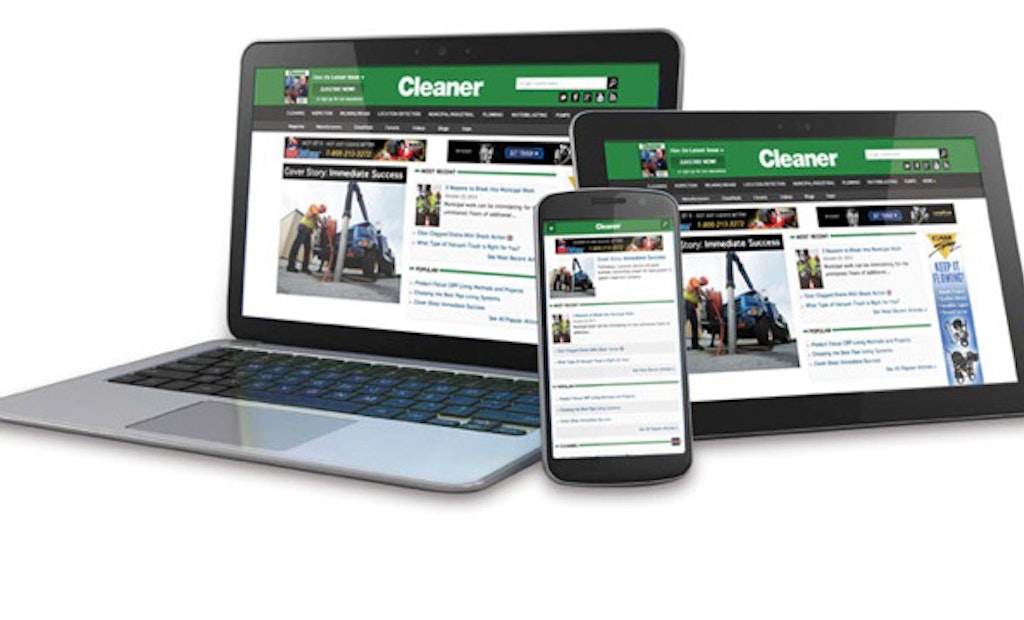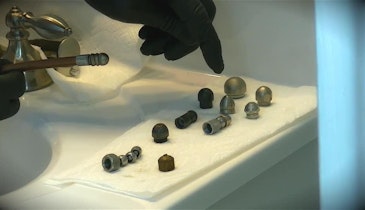Interested in Business?
Get Business articles, news and videos right in your inbox! Sign up now.
Business + Get AlertsIt can be a challenge keeping up with technology, let alone mastering it. Tablets, mobile devices, SEO, Google Analytics, social media — after a while, it becomes a stream of words — a steady drone of techy language bombarding us every day. However, there’s no doubt it’s important. Online marketing is here to stay. The Web has become our modern-day Yellow Pages.
You have so many opportunities to wisely use the Internet to promote your business. Here are a few tips from professional online marketers to help you get started.
1. You must be found
A decade ago, a business was cutting edge if it just had a website. You could create a site, throw it online, and feel pretty good about things. You had your contact information out there, your company logo, a few pictures, and it was adequate. Today, just being out there isn’t enough. According to Cody Flanagan, president of iRazor Strategies in Neenah, Wis., being found is the most important reason to hire a Web professional.
“The best looking website doesn’t serve a good purpose unless it can be found,” he says. “It used to be ‘If you built it, they would come.’ Now, it’s ‘If they can find it, they will come.’ ”
According to Flanagan, many companies fail to put enough effort into having their sites discovered by potential customers. He recommends an aggressive marketing budget, advising businesses to devote up to 80 percent of their website dollars to online marketing, which includes search engine optimization and search engine marketing – key elements to getting a high site ranking from search engines.
“A potential customer who uses a search engine is going to type in a generic keyword like ‘septic pumping,’ ” he says. “The companies that come to the top of a list on a search engine are going to get the clicks.”
Being on Page 1 of a search is important. According to a 2006 study from the Search Engine Strategies Conference, when your customers are searching for a service online, 100 percent of them view Page 1 of the search engine results. Only 17 percent move to Page 2, and only a mere 4 percent go on to read Page 3.
The No. 1 position on Page 1 is even more valuable. In fact, it’s the jackpot of the online world. Think of it as sticking a great big ad smack on the front page of The New York Times. A recent study by online ad network Chitika showed that the top-ranked site on a search page received 33 percent of traffic, while the next position brought in 18 percent. Response dropped off quickly from there.
Because being found on the Web amidst dozens or hundreds of similar businesses is critical, hiring a professional might be your best bet.
“If someone is looking to find a professional, they should understand that not every Web designer is a marketer and not every marketer is a designer,” Flanagan says. “They are two different skills. Marketing is an entirely different art.”
Sometimes, you might be able to find a full-service agency that can design your site and market it. But be sure to ask those questions up front. Find out if an agency has experience in your industry. See if they know the keywords your customers might use in searches. Do your homework and make sure the company you choose is doing a good job itself.
Amanda Betts, marketing director at Stellar Blue Design in Appleton, Wis., agrees. “Google them,” she says. “If you want a company to do a service for you, and you can’t find them online, why hire them?”
2. Be big, big bold
Today’s culture has a very low attention span, which means you need to quickly grab your customer’s attention when they do find your website. On average, you have about eight seconds to tell a customer who you are and what you do.
“We no longer care to read things,” Betts says. “We need to visually tell a story through graphics, icons and images. People are expecting visual, no matter the industry — even in wastewater management.”
The homepage of your website is your marketing hub, and it must quickly tell your customers what you do.
“When you get to a homepage, what are the three, four or five call-to-action buttons that you want?” Betts asks. “You need a quick call-to-action because the average time a customer spends on a site is one to two minutes.”
Betts says her firm works toward contemporary design, meaning they approach websites as a brand placeholder that can withstand technology trends and changes.
“We construct websites that work for you now, tomorrow and all the years of future successes,” she says. “There is something to be said about longevity of a website. As marketing comes and goes your website is your brand holder, so it should be an up-front investment.”
3. Reviews are gold
In this crazy world of inbound marketing, where customers are searching for you, word-of-mouth recommendations, reviews and inbound links are pure, shiny hunks of gold. That’s where sites like Angie’s List, Facebook, Twitter and Google reviews make a difference. They add credibility to your business, and they help move your site up in Google rankings. Reviews are so important, says Flanagan, that it’s OK to solicit them from your customers.
“My brother has a window-tinting business,” he says. “When someone has a car tinted, he will ask them up front before they leave if they would mind going to Google and writing a review. It helps build up Google rankings.”
4. Bloggedity, blog, blog, blog
The best and cheapest way to keep your site relevant is through blogs, says Betts. In a competitive world of search engine ranking, one of the cheapest ways you can gain Google points is to continually add new information to your website, which is where blogs come in.
Google constantly crawls the Web, and visits sites about every 14 to 21 days. Because Google is the powerhouse of search engines, you want to be prepared for those visits with fresh content. Now, if you’re not into blogging, you can call it anything you want: case studies, news releases, product updates, whatever. Just try to add content at least twice per month in preparation for those Google visits.
“When I’m working with a small budget or a small business client, I really try to exhaust that opportunity to bring some life to a website,” Betts says. “If there’s something new or relevant to read, you’ll catch Google’s eye.”
5. Avoid pitfalls
No matter your budget, the most important thing is just getting your business online. Whether you choose a build-your-own site or a full-service design firm, Betts issues several warnings.
“Buy the domain, even if you can’t afford the website right away,” she says. “And make sure you register it with your name and make sure you have all of the registration information.”
Betts says that a common problem with clients who seek her service is they don’t understand who owns the website and who owns the domain, which can be a problem when you’re trying to redesign or move content and hosting.
Also, although hosting can be cheap — often as low as $10 per month — be sure you’re getting enough bandwidth (the rate at which your website transfers data via Internet connections). As soon as you start adding images, hosted emails and other elements, your bandwidth needs can change and you’ll run into all sorts of problems.
“Work with a company that does hosting in-house; it will help them monitor your Web needs and swiftly manage updates,” Betts says, adding that a professional online firm knows how to grow with a business as its needs expand.
And one final pitfall: avoid Flash (an animation tool for graphics and videos) at all costs. Large Flash animations can take a few seconds — or longer depending on Internet providers — to load in a visitor’s browser.
“Google can’t read Flash. Mobile devices can’t read Flash,” Betts says. “If Google can’t read your website, it doesn’t know what you want to do. If someone is talking about Flash, turn and walk away.”
Technology can be overwhelming, but there are professionals out there to help you navigate the sometimes-intimidating waters of online marketing. Your business is worthy of a good website and stellar online marketing. So use these tips, invest in a decent site, and find someone who will work as hard for your website as you do for your customers.

How do you keep your website up to date and current to ensure optimal user experience? Post a comment below.






